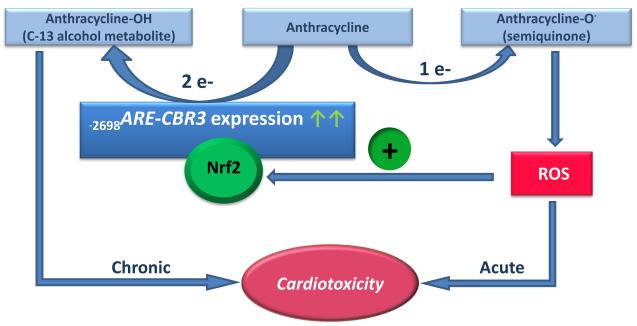Figure 7.
The potential role of human CBR3 during the pathogenesis of anthracycline-related cardiotoxicity. ROS induce Nrf2 nuclear translocation and binding to the functional −2698ARE in the CBR3 gene promoter, which in turn increases CBR3 activity and the synthesis of cardiotoxic anthracycline alcohol metabolites

